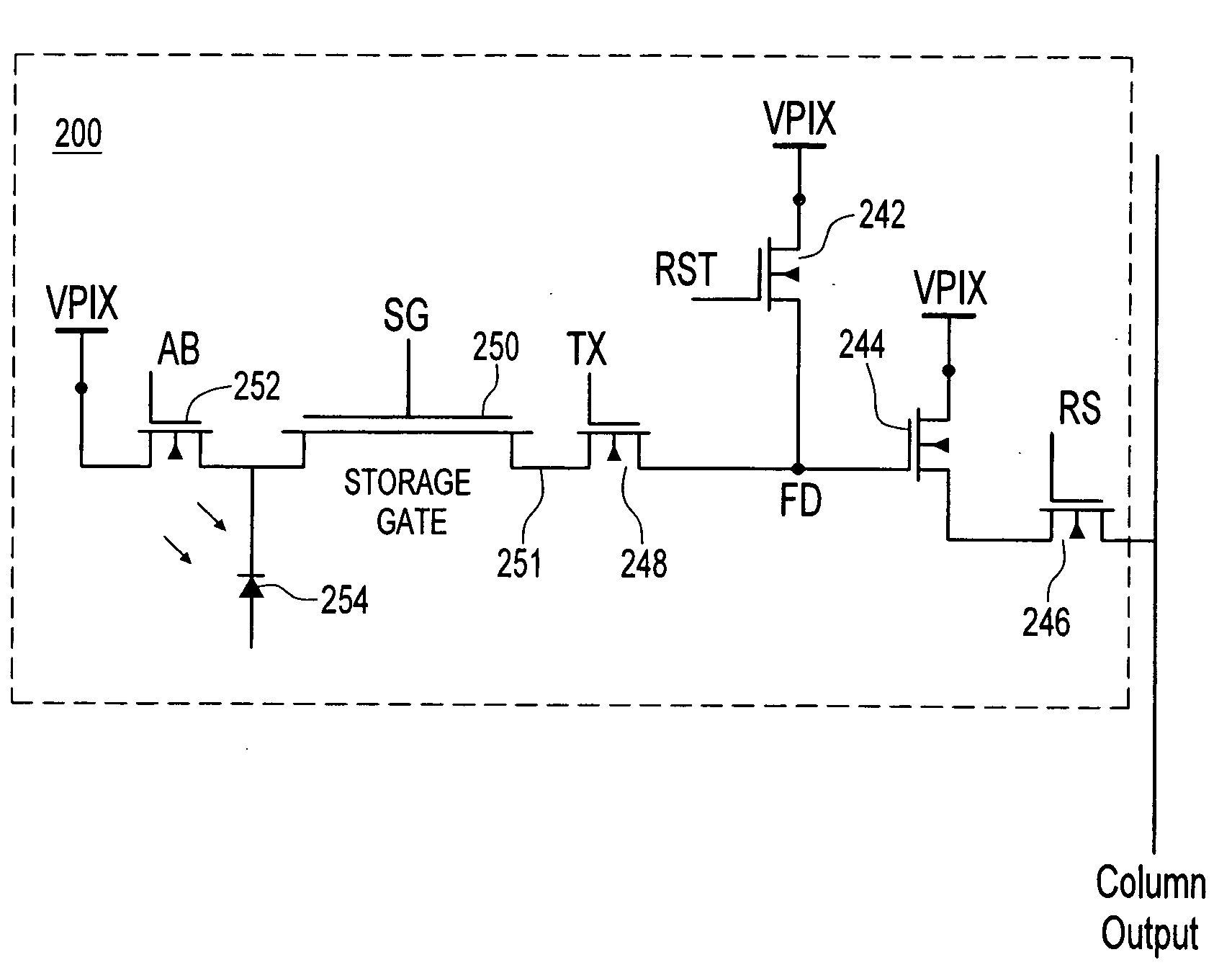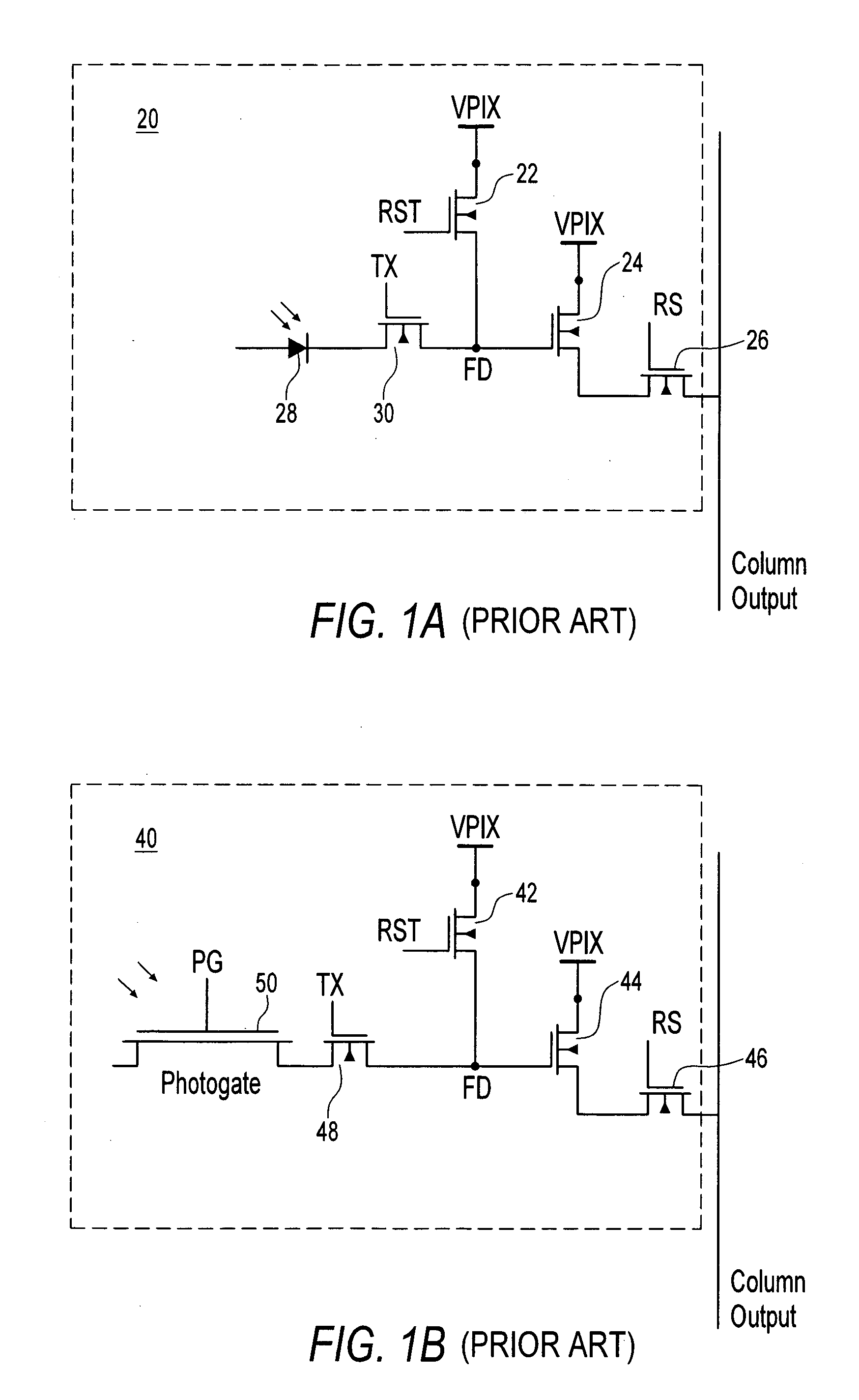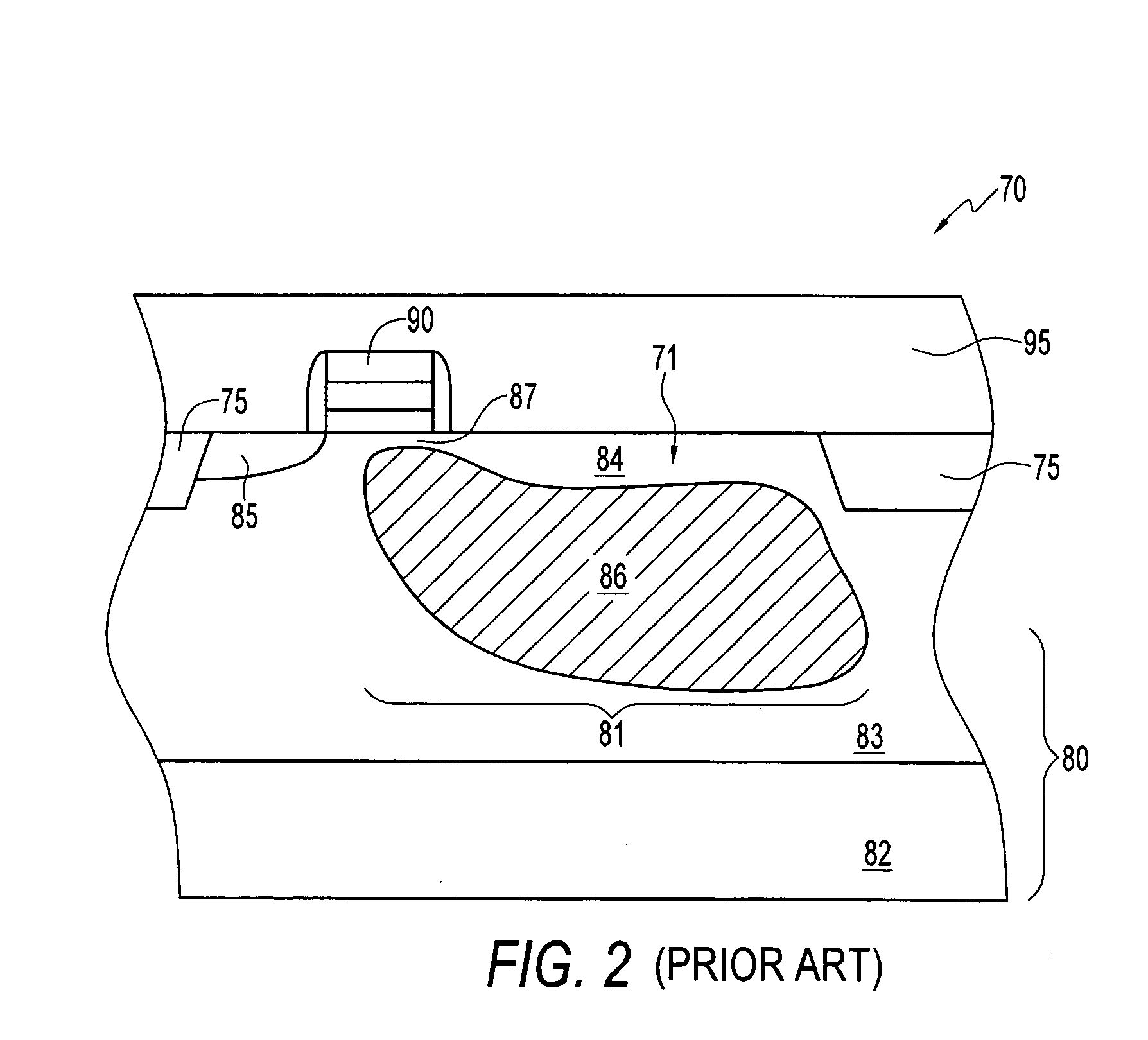Method and apparatus providing dark current reduction in an active pixel sensor
a technology of active pixel sensor and dark current reduction, which is applied in the field of semiconductor devices, can solve the problems of generating dark current, generating dark current, and generating conventional photo gates and photodiodes that do not perfectly generate charge in response to incident light,
- Summary
- Abstract
- Description
- Claims
- Application Information
AI Technical Summary
Problems solved by technology
Method used
Image
Examples
Embodiment Construction
[0021]As described above, surface and interface-generated dark current result from defects in the silicon layers of a photodetector (e.g., photodiode or photo gate) or in other storage areas of a pixel.
[0022]The surface defects in a pixel circuit facilitate the separation of electrons from holes near the surface of a semiconductor substrate, e.g., a silicon substrate, both in the photosensitive region and in a holding region. The free electrons generally travel to an n-type region of the pixel without recombining with holes. However, if the surface regions of the pixel were to include more holes than electrons, then many, even a majority of the electrons at the surface region could be recombined with holes before entering a charge collecting n-type region. The invention provides a method and structure for increasing recombination of electrons and holes in areas of a pixel which are subject to generation of dark current as explained below.
[0023]FIG. 3A shows the potentials of the val...
PUM
 Login to View More
Login to View More Abstract
Description
Claims
Application Information
 Login to View More
Login to View More - R&D
- Intellectual Property
- Life Sciences
- Materials
- Tech Scout
- Unparalleled Data Quality
- Higher Quality Content
- 60% Fewer Hallucinations
Browse by: Latest US Patents, China's latest patents, Technical Efficacy Thesaurus, Application Domain, Technology Topic, Popular Technical Reports.
© 2025 PatSnap. All rights reserved.Legal|Privacy policy|Modern Slavery Act Transparency Statement|Sitemap|About US| Contact US: help@patsnap.com



